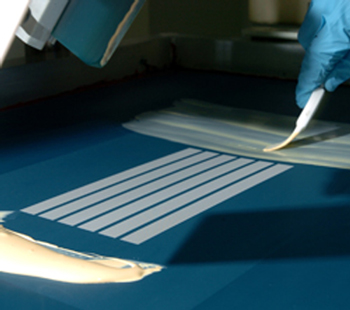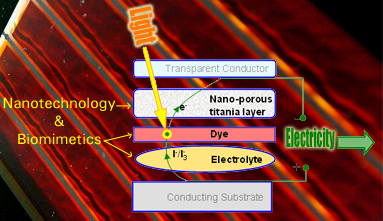What was the single most significant breakthrough in clean energy technology this year? Smart grid digitized systems? Tidal power?
According to Interdisciplinary Committee of the World Cultural Council, it was the Grätzel Cell, a dye solar cell (DSC) that can be applied to surfaces as a coating of colored paint. The committee awarded the 2012 Albert Einstein World Award of Science to its inventor, Professor Michael Grätzel, recently, claiming that “chemistry for energy is currently one of the most important research topics for the future of our society and for mankind worldwide.”

The technology was commercialized in 1994 by Dyesol, an Australian solar company that sells various DSC products and supplies internationally. Each DSC, covered in titania (a white pigment) and ruthenium dye, is a tiny electrolyte that mimics the natural process of photosynthesis. When exposed to sunlight, the ruthenium dye creates electrons that are absorbed by the titania to create electrical current. The cells can be attached–in the form of a spray or a paste– to glass, metal, including electronics, cars, trains, and buses, and construction materials for buildings and homes, as well as various other plastics and surfaces.
As founding father of Dyesol’s technology, Grätzel serves as chairman of Dyesol’s Technology Advisory Board. Since 1977, Grätzel has been a chemistry professor at École Polytechnique Fédérale de Lausanne (EPFL) in Switzerland and has focused his research on solar energy. He has already gained international recognition for many discoveries, including his findings on light’s ability to split hydrogen and oxygen in water and currently serves as director of EPFL’s Laboratory of Photonics and Interfaces.
Grätzel has won several international energy awards, has invented or co-invented over 50 patents, has published over 900 research papers and 60 reviews and book chapters, and holds and honorary doctorate in eleven universities worldwide. While his Grätzel Cell was not the first DSC on the market, it has been lauded for its efficiency and versatility.
With the popularity of solar technology, the price of silicon has dropped globally. But DSC products are still cheaper to manufacture than traditional PV panels. It is arguable whether or not they are much more efficient, but unlike silicon-based cells, the technology has the added benefit, as does CIGS (Copper indium gallium selenide) thin film solar technology, that it can be applied to unconventional surfaces.
But perhaps even more important is that with its low cost, the Grätzel Cell marks a paradigm shift for solar power. Solar panels were once considered ugly, bulky and appropriate only for rooftops. With only a few panels on each rooftop, homeowners could not rely on the panels alone to provide all their power needs. With time, the panels became thinner and more efficient, and some manufacturers even created sleek transparent panels that could be used instead of windows or skylights. But solar spray technology can be applied onto countless surfaces, both stationary and transportable, big and small, flat and bumpy, that were never before candidates for solar power.
The military, for example, is already using a similar technology on tents that can be pitched in remote locations and provide solar-powered electricity without a connection to transmisison lines.

Solar cells on appliances could replace the need for batteries of plugs. On cars, the Grätzel Cell could be a significant fuel source, and on homes and buildings, it could coat the entire exterior to provide a significant source of green power. Solar is no longer stationary, so let your imagination run wild!